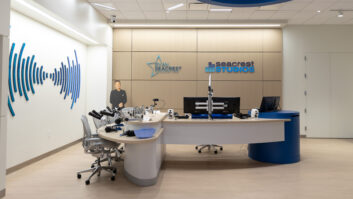Switched networks
Oct 1, 2002 12:00 PM, By Kevin McNamara, CNE
You may recall that Ethernet networks are based on a protocol calledCarrier Sense Multiple Access with Collision Detection, commonly knownas CSMA/CD. This means that data packets from the various devicesconnected to the network are broadcast over a common network backbone.If two or more devices send a packet at the same time, a collisionoccurs and the packets are not able to reach their destination.
If the packets collide, then each device will wait a random periodof time to resend. The device will continue to resend the packet untilit reaches the destination. While Ethernet is an effective means totransfer data between devices, it is inefficient, particularly as anetwork grows. Consider that a moderately loaded 100Mb/s Ethernetnetwork will only provide about 25Mb/s throughput, which willdeteriorate as traffic increases. Switched networks reduce thepotential collision of packets by establishing a virtual connectionbetween two devices attached to the network.
How it works
Network switches replace the passive hubs that were common to oldertraditional Ethernet installations. Passive hubs are simply a signalsplitter that distributes or repeats, packets to all portssimultaneously. Network switches examine each packet and establish adedicated connection between the two devices, similar to that of atraditional telephone connection � when you dial a number, youare routed to a specific destination based on the telephone numberdialed; once the person on the other end picks up the phone, a virtualconnection is established.
In many ways switches operate similar to that of a bridge that isoperating at OSI Layer Two, which is the layer that deals with networkaddressing. When a packet arrives at a port of a network switch, thepackets are examined to determine their source and destination. Theswitch will handle the packet in one of three ways:
- If the packet is local to the segment (i.e. connected to theoriginating device before the switch), it will be filtered (or ignored)and not retransmitted through the switch.
- If the destination address of the packet can be identified withinthe switch’s database of addresses, it will forward the data to theproper port.
- If the destination address of the packet is unknown, it will betransmitted on all ports.
Network switches are based on two possible architectures: store andforward and cut through. Switches based on the store-and-forward methodanalyze the entire packet prior to sending them to a destination. Thisprocess takes more time and, more importantly, requires a great deal ofhardware memory to prevent a bottleneck of data. Switches based on thecut-through method only read the destination address before forwardingto the proper port, making it a far more efficient method. Improvementsin technology have increased the throughput of the store andforward-based switches to nearly that of cut through.
Switch speed
Switches are designed to handle a huge amount of data throughput. Toput this into perspective, consider a 10-port switch rated at 100Mb/s.Add the maximum speed of each port: 100Mb/s � 2 (duplex operation)� 10 (ports) = 2Gb/s. Under fully loaded conditions, thetheoretical bus speed must be capable of operating at 2Gb/s minimum. Inthe real world, the use of each port would not exceed 50 percent, andtherefore the bus speed can be reduced to about 1Gb/s.
Whereas a hub sends data packets toevery node on a network, a switch sends the packet to just the intendedrecipient.

If the bus speed of the switch is less than that required to sustaintraffic at a 50 percent usage rate, then the switch is considered to beblocking, which means that the switch may not be able to pass dataunder those conditions.
Some manufacturers combine the cut-through and store-and-forwardtechnologies into a switch. These hybrid designs incorporate featuresof both, permitting a higher level of traffic management.
New network switches are available that operate at Layer Two andThree, also called Layer Three switches. Layer Three switches add thebenefit of operating at the network layer, permitting traffic to beswitched based on IP addresses. These switches also identify the flowof traffic and are capable of switching those flows at the hardwarelevel.
All of the Networks articles have been approved by the SBECertification Committee as suitable study material that may assist yourpreparation for the SBE CBNT exam.












